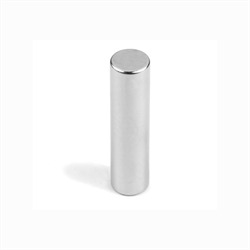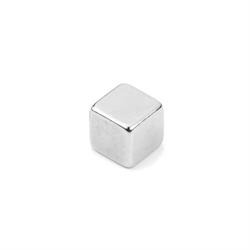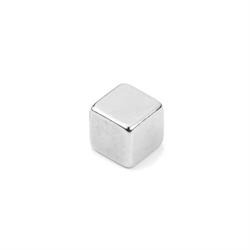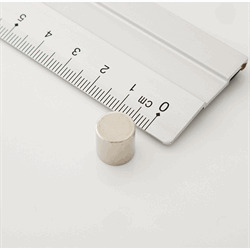Remagnetization of magnets
Has your magnet lost its strength? This guide is about how you can remagnetize magnets that have lost some of their strength. As long as you haven't exposed your magnet to extreme heat or cold, it's fairly easy to make your magnet highly magnetic again.
We need to go through some theory first, so you know whether your magnet has permanently lost its magnetism, or if the poles have just become a bit "skewed" and need to be realigned, so the magnet works optimally again. But to let you know how simple the solution is, here's the answer straight away:
__________________________________
The solution is to use another magnet
- and yes, it's really that simple!
__________________________________
But let's start with the temperatures standardmagnets* can withstand - their so-called maximum operating temperatures - to figure out whether the magnetism is lost permanently or temporarily.
Maximum operating temperature
- Neodymium withstands up to 80°C but has no lower limit.
- Ferrite withstands up to 250°C and down to -40°C.
- Magnetic tape (and sheets) withstand up to 85°C and down to -20°C.
*By standard magnet, we simply mean that these are quite normal neodymium magnets with N-value and ferrite magnets with Y-value. Specialized magnets are manufactured to handle specific tasks under higher/lower temperatures, but we won't touch on those in this FAQ.
There's usually always an exception to the rule, and it's therefore important to note that the above temperatures are only indicative. The thinner a magnet is, the more fragile it becomes. Therefore, you might find that magnets with a thickness of 1 mm might start losing their magnetism from 60°C. But if you have a magnet with the same thickness as its diameter (e.g., 10x10 mm), it can often withstand higher degrees (actually up to 140°C under ideal conditions). Test it first if you are going to use them in larger machines or anything like so. However, we always recommend not using the magnets up to the max limits of their operating temperature for extended periods, as it makes the setup more fragile concerning temperature fluctuations.
Note! No lower limit for neodymium magnets means that you can put them in liquid nitrogen without damaging them.
Related products - Remagnetization of magnets
-
Power magnet, Rod 10x40 mm.
MAGZ-089-P

Strength 4.3 kg. 5,40 6,75 EUR
In stock -
Power magnet, Cube 10x10x10 mm.
MAGZ-063-P

Strength 3.8 kg. 2,88 3,60 EUR
In stock -
Power magnet, Cube 12x12x12 mm.
MAGZ-123-P

Strength 6.3 kg. 4,72 5,90 EUR
In stock -
Power magnet, Disc 10x10 mm.
MAGZ-109-P

Strength 3.9 kg. 2,68 3,35 EUR
In stock
No temperature impact?
Good news if your magnet hasn't been exposed to higher or lower temperatures than those listed above: it's quite easy to remagnetize your magnet (i.e., restore the magnet's magnetism).
Usually, a weak magnet is due to the magnet receiving a lot of hits/knocks. For example, when you hang your knives on the magnetic knife strip, or when you let your toy trains with magnetic couplings crash together over and over. Most people can relate to this, but knocks can also occur in machines where the machine parts constantly collide and hit the magnets, or if you're lifting metal plates with magnets where the attraction happens at high speed.
How to remagnetize magnets
Take a magnet in one hand and point one end of the magnet towards the magnet that needs to be remagnetized. You'll easily figure out which end of your extra magnet to use since there will still be some weak attraction/repulsion from the "old" magnet, provided it's not permanently damaged. You need to use the end with attraction.
Slowly move the hand with the magnet over the "old" magnet from one end with very little distance between the two magnets, then remove the magnet upwards when you reach the other end of the "old" magnet. Start again from the beginning by slowly moving over the "skewed" magnet. Imagine drawing a horizontal D in the air in the same way with at least 10 repetitions. Afterward, you'll find that the magnet poles in the "old" magnet have been realigned, and your magnet works again. You can, of course, continue this until you achieve the desired effect. It's just important that you make your D in the same direction all the time.
Use these magnets for remagnetization
These magnets are good choices for sizes that are easy to hold and have enough power to work from the small distance that occurs when you move in a D shape over the magnet that has become "skewed":
Feel free to contact our support team or browse through our FAQ if you have any other questions about magnets.